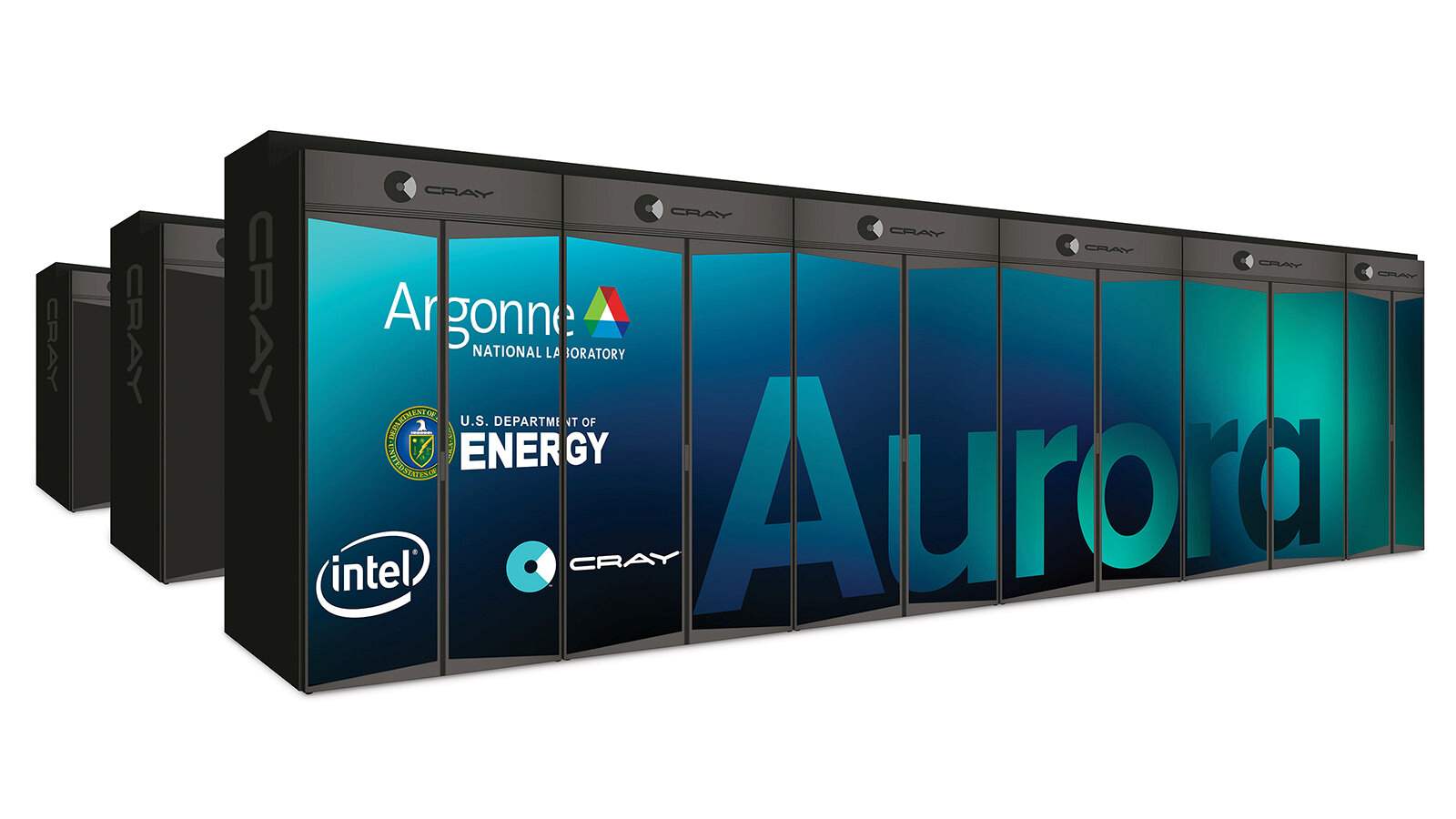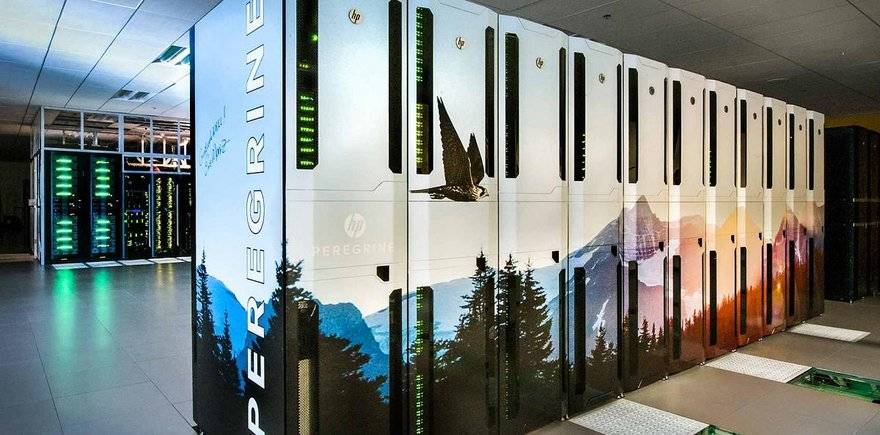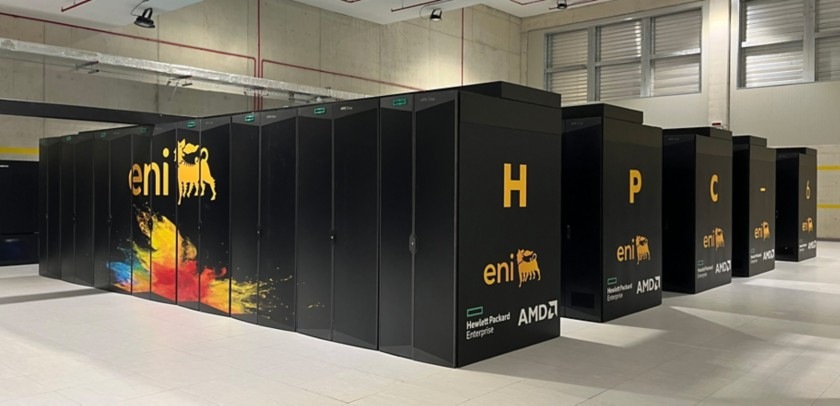The LARC was produced in 1960 as the first supercomputer, specifically designed for the use of the US Navy Research and Development Centre.
It was originally constructed to house the extremely high computational requirements for the design and simulations of the nation's nuclear weapons.
Another early, but notable, example is the IBM 7030, which is listed among the first-generation supercomputers that IBM developed for the Los Alamos National Laboratory as far back as the late 1950s.
Completed in late 1961, it ultimately fell short of the promised performance of a hundredfold increase. However, it was sold to the Los Alamos National Laboratory.
But do you like to guess which supercomputer you’ll be reading about in 2025, setting new records with its groundbreaking speed and abilities?
The new El Capitan system, at the Lawrence Livermore National Laboratory in California, USA, is the most powerful system on the list, with a 1.742 EFlop/s HPL score.
In this article, we’re going to go through the 10 fastest supercomputers in the world, highlighting the incredible change in technology and computing power.
Check Out| What is the Param Rudra Supercomputer Newly Launched HPC System By PM Modi
List of the Top 5 Supercomputers in the World?
According to the Top500 list, here are the top 5 fastest supercomputers in the world:
| Rank | Supercomputer Name | Vendor | Processor | GPU/Accelerator | Interconnect | OS |
| 1 | El Capitan | HPE | AMD 4th Gen EPYC 24C 1.8GHz | AMD Instinct MI300A | Slingshot-11 | TOSS |
| 2 | Frontier | HPE | AMD Optimized 3rd Generation EPYC 64C 2GHz | AMD Instinct MI250X | Slingshot-11 | HPE Cray OS |
| 3 | Aurora | Intel | Xeon CPU Max 9470 52C 2.4GHz | Intel Data Center GPU Max | Slingshot-11 | - |
| 4 | Eagle | Microsoft Azure | Xeon Platinum 8480C 48C 2GHz | NVIDIA H100 | NVIDIA Infiniband NDR | - |
| 5 | HPC6 | HPE | AMD Optimized 3rd Generation EPYC 64C 2GHz | AMD Instinct MI250X | Slingshot-11 | RHEL 8.9 |
| 6 | Supercomputer Fugaku | Fujitsu | A64FX 48C 2.2GHz | - | Tofu interconnect D | - |
| 7 | Alps | HPE | NVIDIA Grace 72C 3.1GHz | NVIDIA GH200 Superchip | Slingshot-11 | HPE Cray OS |
| 8 | LUMI | HPE | AMD Optimized 3rd Generation EPYC 64C 2GHz | AMD Instinct MI250X | Slingshot-11 | - |
| 9 | Leonardo | EVIDEN | Xeon Platinum 8358 32C 2.6GHz | NVIDIA A100 SXM4 64 GB | Quad-rail NVIDIA HDR100 Infiniband | - |
| 10 | Tuolumne | HPE | AMD 4th Gen EPYC 24C 1.8GHz | AMD Instinct MI300A | Slingshot-11 | TOSS |
#1. El Capitan

Source: Advanced Simulation and Computing - Lawrence Livermore National Laboratory
- Location: Lawrence Livermore National Laboratory — California, U.S.
- Performance: 1,742 petaFLOPS (1.742 exaFLOPS)
- Components: AMD 4th-Gen EPYC 24-core CPUs in AMD Instinct MI300A APUs
- First online: November 2024
El Capitan is considered one of the most powerful supercomputers in the world. It is also ranked as the world's third-ever exascale machine, going online at the end of 2024. Located at the Lawrence Livermore National Laboratory, El Capitan tops the list with a beating HPL score of 1.742 EFlop/s.
This HPE Cray EX255a system boasts AMD 4th Gen EPYC CPUs and AMD Instinct MI300A GPUs, forming a powerful "Accelerated Processing Unit" architecture that integrates CPU and GPU technologies into a unified platform. It's liquid-cooled and designed for extreme energy efficiency.
It has 11,039,616 combined CPU and GPU cores and is based on AMD 4th generation EPYC processors with 24 cores at 1.8 GHz and AMD Instinct MI300A accelerators. This supercomputer is built to safeguard and secure the U.S. stockpile of nuclear weapons in the absence of underground testing.
It is also utilised for secret national security activities, such as how artificial intelligence (AI) and machine learning can be applied to those jobs. It will also resolve issues in physics and materials science.
#2. Frontier

Source: Freethink
- Location: Oak Ridge National Laboratory — Tennessee, U.S.
- Performance: 1,353 petaFLOPS (1.4 exaFLOPS)
- Components: AMD EPYC 64-core CPUs and AMD Instinct MI250X GPUs
- First online: August 2022
Located at the Oak Ridge National Laboratory, Frontier ranks #2 globally. This HPE Cray EX235a system utilises AMD Optimised 3rd Generation EPYC CPUs and AMD Instinct MI250X GPUs, interconnected by Slingshot-11.
Physically, it occupies 74 rack cabinets and uses a sophisticated liquid-cooling system. Frontier was the world's first verified exascale supercomputer, designed to accelerate scientific discovery in areas like climate modelling, drug discovery, materials science, and nuclear energy.
Its high performance and pioneering exascale capabilities, including its ability to achieve over 1.1 exaflops, secured its previous #1 and current #2 ranking, showcasing the immense power of its AMD-based architecture.
#3. Aurora

Source: The New York Times
- Location: Argonne National Laboratory — Illinois, U.S.
- Performance: 1,012 petaFLOPS (1.0 exaFLOPS)
- Components: Intel Xeon Max Series CPUs and Intel Data Center Max Series GPUs
- First online: June 2023
Aurora, an HPE Cray EX system, resides at the Argonne National Laboratory and currently holds the #3 spot.
It integrates Intel Exascale Compute Blade architecture with Intel Xeon CPU Max 9470 processors and Intel Data Center GPU Max accelerators, using Slingshot-11 for interconnectivity. Aurora was built to advance scientific research across a broad spectrum, including brain structure, nuclear fusion, new materials, and cosmology.
Its massive scale, spanning the area of two basketball courts and weighing 600 tons, with a peak performance exceeding an exaflop, highlights its purpose as a leading-edge tool for complex simulations and AI-driven scientific breakthroughs.
#4. Eagle

Source: Data Center Dynamics
- Location: Microsoft Azure — The Cloud / Distributed
- Performance: 561 petaFLOPS (0.56 exaFLOPS)
- Components: Intel Xeon Platinum 8480C 48C CPUs and Nvidia H100 GPUs
- First online: August 2023
The Eagle supercomputer, an Azure-based system, is hosted by Microsoft Azure and features Intel Xeon Platinum 8480C CPUs coupled with NVIDIA H100 GPUs, utilising NVIDIA Infiniband NDR. Its characteristics lean towards a cloud-based supercomputing environment, offering significant scalability and flexibility.
While it doesn't represent a single physical installation in the traditional sense, its distributed nature across Microsoft's data centres allows for immense computational power.
Eagle's purpose is to provide high-performance computing capabilities for diverse workloads in the cloud, including AI, machine learning, and advanced simulations for Microsoft's customers and research initiatives.
#5. HPC6

Source: Eni
- Location: Green Data Center Eni — Ferrera Erbognone, Italy
- Performance: 477.9 petaFLOPS
- Components: AMD 3rd-Gen EPYC 64-core CPUs in AMD Instinct MI250X GPUs
- First online: November 2024
Eni's HPC6, a HPE Cray EX235a system, is located at Eni's Green Data Center in Italy and is Europe's fastest supercomputer. It boasts AMD Optimised 3rd Generation EPYC CPUs and AMD Instinct MI250X GPUs with Slingshot-11 interconnect.
This system is distinguished by its high energy efficiency, employing an advanced direct liquid cooling system that dissipates 96% of generated heat.
HPC6 was built to significantly enhance Eni's computational capacity for its energy transition strategy, focusing on optimising industrial facilities, improving geological studies for CO₂ storage, developing high-performance batteries, and simulating plasma behaviour for fusion research.
Which is the Fastest Supercomputer in the World?
The powerful El Capitan system, located at the Lawrence Livermore National Laboratory in California, U.S.A., has positioned itself as the most powerful supercomputer in the world. This high-performance computer ranks on the list with an HPL score of 1.742 EFlop/s.
It has 11,039,616 combined CPU and GPU cores and is based on AMD 4th generation EPYC processors with 24 cores at 1.8 GHz and AMD Instinct MI300A accelerators. El Capitan relies on a Cray Slingshot 11 network for data transfer and achieves an energy efficiency of 58.89 Gigaflops/watt.
What's Next| Top 10 Cleanest Countries in the World - Check out the complete list here
Comments
All Comments (0)
Join the conversation